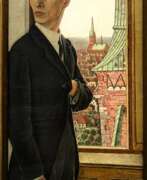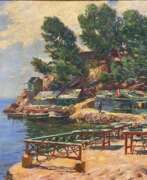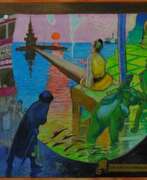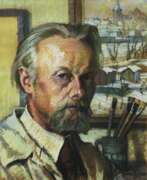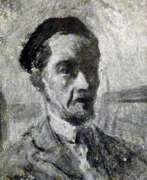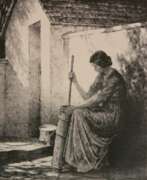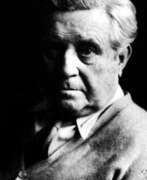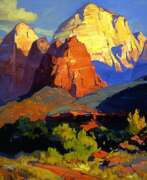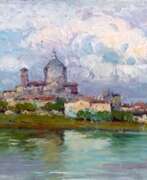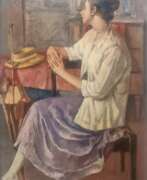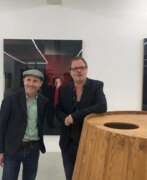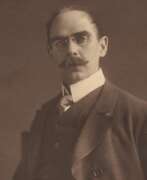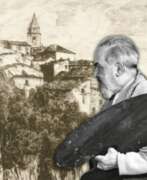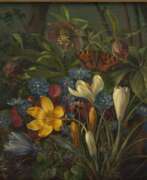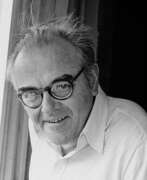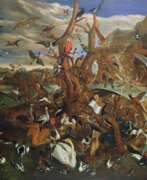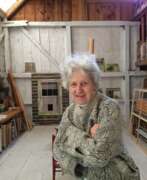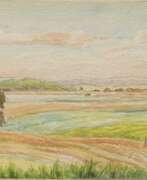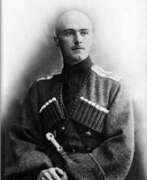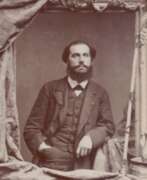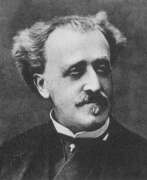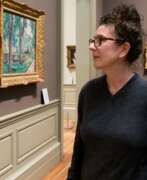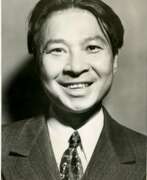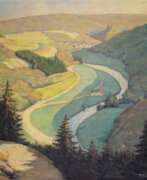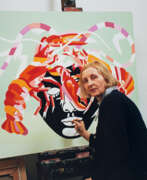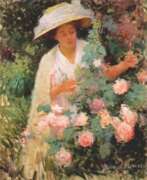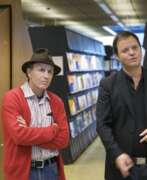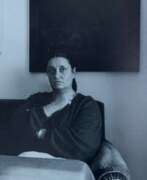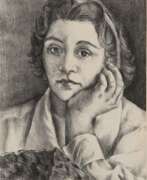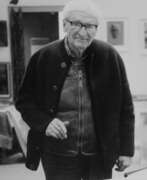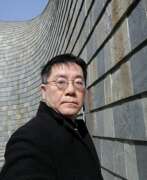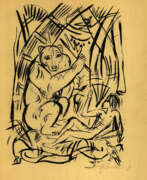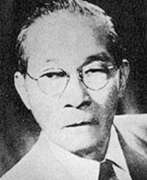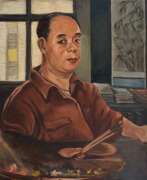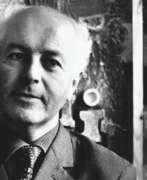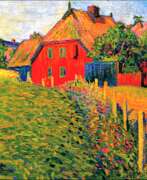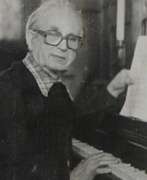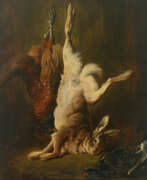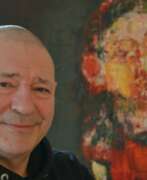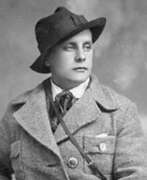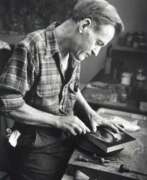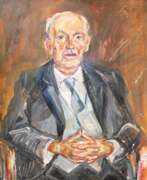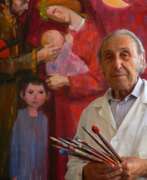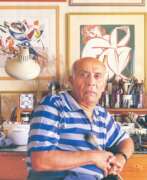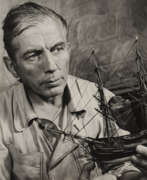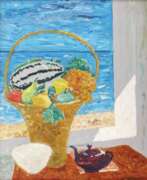Educators Still life
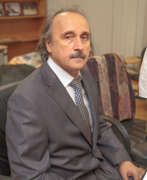

Sultan Shamsutdinovich Abaev (Russian: Султан Шамсутдинович Абаев), a Chechen and Russian artist born on November 1, 1954, in Khaidarkan, Soviet Union, is celebrated for his distinctive contributions to landscape art. A member of the Artists Unions of Saint Petersburg and the Chechen Republic, Abaev's work exemplifies his profound connection to his cultural roots and the rich landscapes that inspire him.
Educated at the prestigious Repin Institute of Painting, Sculpture, and Architecture in Saint Petersburg, Abaev has been honored multiple times for his artistic achievements, including receiving the title of Honored Artist of the Russian Federation. His works have been internationally recognized, finding places in private collections across countries such as Germany, the United States, and Japan.
Abaev's career also includes time spent abroad in Sri Lanka and South Korea from 1991 to 1993, where he expanded his artistic horizons and produced a series of paintings influenced by these experiences. Today, his works are sought after by collectors, especially those interested in landscapes and cultural narratives embedded in art.
Stay updated on exhibitions and sales related to Sultan Shamsutdinovich Abaev's enchanting landscapes by signing up for our exclusive alerts. These updates are essential for collectors and art connoisseurs interested in owning a piece of Chechen and Russian art history.


Vladimir Ivanovich Akulov (Russian: Владимир Иванович Акулов) is a Soviet and contemporary Belarusian artist. He is known as a painter, graphic artist and teacher, a representative of the second wave of Belarusian avant-garde.
Vladimir Akulov in his work has developed a unique style under the influence of expressionism, cubism, primitivism, fauvism. He is a master of portrait, landscape, still life, compositions with symbolic and allegorical subjects, illustrations of literary works. During his career the artist created several cycles of portraits, including those of famous people.
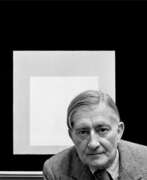

Josef Albers was a German-born artist and educator. The first living artist to be given a solo shows at MoMA and at the Metropolitan Museum of Art in New York, he taught at the Bauhaus and Black Mountain College, headed Yale University's department of design, and is considered one of the most influential teachers of the visual arts in the twentieth century.
As an artist, Albers worked in several disciplines, including photography, typography, murals and printmaking. He is best known for his work as an abstract painter and a theorist. His book Interaction of Color was published in 1963.


Laure Albin-Guillot was a French artist and photographer. She is best known for her pioneering work in photography and for her contributions to the development of the medium in France during the early 20th century.
Albin-Guillot's early photographic work was focused on portraiture, and she became known for her elegant and striking images of celebrities and other notable figures. She later expanded her practice to include still life and landscape photography, and she was also a skilled photojournalist.
In addition to her photography, Albin-Guillot was an important figure in the Parisian art world, and she was involved in the development of modernist movements such as Cubism and Surrealism. She was a member of the Société des Artistes Décorateurs and was also involved in the organization of several major international exhibitions, including the Exposition Internationale des Arts Décoratifs et Industriels Modernes in Paris in 1925.
Albin-Guillot was also a prolific writer and educator, and she wrote several books on photography and art history. She taught photography at the École Estienne in Paris, and she also founded her own photography studio, which became known for its innovative use of lighting and composition.
Today, Albin-Guillot's work is recognized as an important contribution to the development of modern photography, and her photographs are held in the collections of major museums around the world, including the Museum of Modern Art in New York, the Centre Pompidou in Paris, and the Victoria and Albert Museum in London.
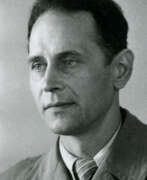

Vladislav Leopoldovich Anisovich (Russian: Владислав Леопольдович Анисович) was a Soviet artist of the mid-twentieth century. He is known as a painter, graphic artist and teacher, a representative of the Leningrad school of painting.
Vladislav Anisovich participated in various exhibitions since 1935. His work included portraits, historical and genre compositions, as well as landscapes. Among the famous paintings of the artist are "The passage of K. Voroshilov's detachment from Lugansk to Tsaritsyn", "Assault on Perekop" and others. The master taught at the Leningrad Institute of Painting, Sculpture and Architecture.
His works are in various museums and private collections in many countries, including the State Russian Museum.
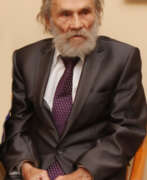

Boris Vladimirovich Arakcheyev (Russian: Борис Владимирович Аракчеев) was a Soviet and Belarusian artist of the second half of the twentieth and early twenty-first centuries. He is known as a painter and teacher.
Boris Arakcheyev worked in easel painting in the genres of landscape, still life, thematic paintings and battle scenes. A series of portraits of contemporaries and famous people occupies a special place in his creative heritage. He also worked in monumental painting - he was one of the creators of the diorama "Minsk Cauldron" in the Museum of the History of the Great Patriotic War of Belarus.
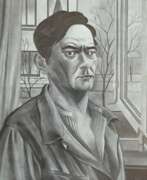

Christian Arnold was a German painter and graphic artist. He is best known for his landscape paintings that often depicted the rural and coastal regions of northern Germany.
Arnold studied at the Academy of Fine Arts in Munich and later taught at the School of Arts and Crafts in Bremen. His work was heavily influenced by the German Expressionist movement, and he often used bold colors and thick brushstrokes to create a sense of emotional intensity in his paintings.
In addition to his landscapes, Arnold also produced numerous portraits, still lifes, and religious works. He worked in a variety of mediums, including oil paints, watercolors, and printmaking.
Arnold's work was exhibited widely during his lifetime, and he received numerous awards and honors for his contributions to the arts. Today, his paintings are held in collections around the world, including the National Gallery in Berlin and the Kunsthalle Bremen.
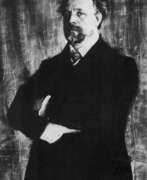

Vasily Nikolayevich Baksheyev (Russian: Василий Николаевич Бакшеев) was a distinguished Russian painter, celebrated for his contributions to landscape, interior, still life, and genre painting. His works are emblematic of the Union of Russian Artists' spirit, a movement he was closely aligned with throughout his career. Born in Moscow in 1862, Baksheyev was a prodigious talent who honed his craft at the esteemed Moscow School of Painting, Sculpture, and Architecture from 1877 to 1888, under the tutelage of luminaries such as Vladimir Makovsky, A. K. Savrasov, and V. D. Polenov. His artistic journey was marked by a significant award early on—a large silver medal for "The Return of Pilgrimage" in 1889—and travels to cultural hubs like Paris and Munich in 1895, which broadened his artistic horizons.
Baksheyev's artistry evolved over the years, from initial genre pictures to a profound exploration of landscape painting, for which he is most renowned. His works, especially from the Soviet era, continue the rich tradition of Russian lyrical landscape, imbued with a poetic quality that captures the essence of nature's transient beauty. His teaching career and efforts in organizing regional museums further underscore his commitment to art and community. Baksheyev's legacy is preserved in his poignant and luminous paintings, such as "Twilight," "Birches," and "Sunny Day," which offer a glimpse into the serene and vibrant landscapes of the Tarusa region. His work remains an invaluable part of Russia's cultural heritage, housed in numerous museums across the country and celebrated for its artistic integrity and emotional depth.
For art collectors and enthusiasts, Baksheyev's oeuvre represents a pivotal chapter in the evolution of Russian painting, characterized by its lyrical beauty and emotive power. His ability to blend impressionistic brushwork with symbolic imagery creates a unique visual language that speaks to the heart of the Russian landscape tradition.
To stay updated on new insights and opportunities related to Vasily Nikolayevich Baksheyev, including sales and auction events, signing up for updates is highly recommended. This subscription ensures that enthusiasts and collectors alike are always informed about the latest developments and available works related to this exceptional artist.
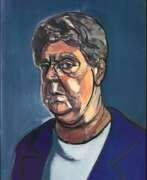

Leland Bell, an American painter born in 1922 and passed away in 1991, is a figure whose artistic journey and output stand as a beacon of individuality and depth in the 20th-century art world. Bell's dedication to painting was profound, shaping a career that remained largely self-taught yet significantly influential. His work, characterized by a passionate engagement with both abstract and figurative painting, represents a unique blend that defied the dominant trends of his time, making him a crucial figure for collectors and art enthusiasts.
Bell's artistic signature is evident in his choice of subjects—still life, portraiture, and figure composition—handled with a distinctive blend of abstract principles and figurative clarity. His paintings are recognized for their bold contour lines, vibrant planes of color, and dynamic compositions, revealing a singular vision that bridges the abstract with the tangible. This approach allowed him to explore the depth of human and thematic elements with an intensity and psychological complexity, particularly seen in his self-portraits and family group scenes, which often carry a mythic quality, elevating everyday existence to the level of allegory.
Significant in Bell’s legacy is his ability to convey the essence of his subjects with a sculptural weight, granting them a presence that is both immediate and timeless. His paintings, such as the "Family Group with Butterfly" (1986-90) and his series of self-portraits, demonstrate a mastery of form and space that invites viewers into a deeply personal yet universally resonant world. Bell's influence extended beyond his canvas through his roles as a teacher and lecturer, where he passionately advocated for the artists he revered, contributing to a rich educational legacy that complemented his artistic achievements.
Bell's works are held in prestigious collections and have been the subject of retrospective exhibitions, such as at the Phillips Collection in Washington, DC, highlighting his enduring impact on American art. His dedication to exploring the nuances of form, color, and composition has left a lasting mark, ensuring his place among the notable artists of his generation.
For collectors and experts in the field of art and antiques, Leland Bell's oeuvre offers a compelling study in the power of painting to convey complex human emotions and narratives. His work remains a testament to the enduring relevance of figurative art in the modern era, and his contributions continue to inspire new generations of artists and collectors alike.
To stay informed about new discoveries, sales, and auction events related to Leland Bell's work, signing up for updates is a practical way to ensure you don't miss out on opportunities to engage with the legacy of this remarkable artist. This subscription is a business-like avenue to keep abreast of events that celebrate Bell’s artistic achievements and offer insights into his profound impact on the art world.


Grigory Mikhailovich Bobrovsky (Russian: Григорий Михайлович Бобровский) was a distinguished Russian painter born in Vitebsk in 1873 and passed away in Leningrad in 1942. His academic journey in the arts began at the prestigious Academy of Arts under the tutelage of Ilya Repin between 1893 and 1900, where he honed his craft and graduated with the title of artist for his painting "Evening." By 1916, Bobrovsky was recognized as an academician, contributing significantly to the Russian art scene with his evocative landscapes and scenes capturing early 20th-century life.
Bobrovsky's artwork is celebrated for its free manner of painting, decorative expressiveness of color, attention to lighting effects, and the fragmentariness of composition. His works, which were influenced by both the Union of Russian Artists and the Mir Iskusstva movement, spanned a variety of themes, including landscapes and scenes dedicated to the Revolution and life in the USSR. Notable works include "Early Spring" (1922), "Night at Sea" (1923), and "The Road" (1927), showcasing his mastery over light and color.
His contributions to Russian art were recognized through exhibitions during his lifetime and posthumously, with retrospective exhibitions held in Leningrad (1947) and Perm (2001). Bobrovsky's works are part of several prestigious collections, including the State Tretyakov Gallery, the State Russian Museum, and the Perm State Art Gallery, evidencing his lasting impact on the art world.
For art collectors and experts, Grigory Mikhailovich Bobrovsky's oeuvre offers a profound insight into the evolution of Russian painting in the early 20th century. His ability to capture the essence of his era through vibrant colors and expressive compositions makes his work a valuable addition to any collection.
To stay updated on new product sales and auction events related to Grigory Mikhailovich Bobrovsky's works, sign up for updates. This subscription will keep you informed about opportunities to acquire pieces by this remarkable artist, ensuring you don't miss out on adding a piece of Russian art history to your collection.


József Boksay (Russian: Иосиф Иосифович Бокшай) was a prominent Hungarian landscape painter and graphic artist, born on October 2, 1891, in Gyertyánliget and passing away on October 19, 1975, in Ungvár. His work significantly contributed to the artistic life of Carpathian Ruthenia, making him a notable figure in the Carpathian school of painting. Graduating from the Hungarian Academy of Fine Arts in 1914, where Imre Révész was his master, Boksay embarked on a journey of teaching and creating. His post-graduation life saw him taking study trips across European cities such as Vienna, Paris, and Budapest, further enriching his artistic vision.
Boksay's dedication to the arts led him to co-found a free school with Béla Erdélyi in 1927, aiming to nurture the region's artistic talent. His academic contributions continued post-World War II, teaching at the Fine Arts College in Ungvár and the Industrial Art School in Lemberg (now Lviv). A significant portion of his works delves into religious themes, a testament to his deep engagement with ecclesiastical art. This involvement is vividly illustrated by his transformative work on the ceiling frescoes of the Máriapócs church, where he meticulously integrated baroque elements with his distinctive style.
His legacy is preserved not only in his contributions to Carpathian Ruthenia's art scene but also in the numerous awards he received for his work. Today, his creations can be found in the museums of Carpathian Ruthenia and the Tretyakov Gallery, showcasing his lasting influence on the region's cultural heritage.
For collectors and art enthusiasts interested in the unique blend of cultural and artistic expressions that define Carpathian Ruthenia, Boksay's work offers a captivating exploration. His contributions to ecclesiastical and landscape painting underscore the rich tapestry of this region's art history. Sign up for updates to stay informed about new product sales and auction events related to József Boksay, ensuring you never miss an opportunity to engage with the legacy of this distinguished artist.
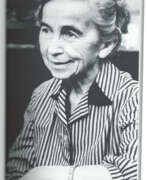

Varvara Dmitrievna Bubnova (Russian: Варвара Дмитриевна Бубнова) was a distinguished Russian painter, graphic artist, and pedagogue, celebrated for her mastery in lithography. Born into a noble family in St. Petersburg, she was deeply immersed in an atmosphere of poetry and music from an early age, which significantly influenced her artistic and intellectual development. Bubnova's education spanned from the Drawing School of the Society for the Encouragement of Arts to the St. Petersburg Academy of Arts, where she was an active member of the avant-garde group "Union of Youth" alongside prominent figures like Mayakovsky, Malevich, and Goncharova.
Her journey took a dramatic turn in 1923 when she moved to Japan, marking the beginning of a transformative period where she not only embraced Japanese art forms like suibokuga and Sumi-E ink drawing techniques but also significantly contributed to Japanese cultural life through her work and teachings. Her unique approach to art and education left a lasting impact on Japanese arts and culture. Among her notable works inspired by her experiences in Japan are "Young Violinist" (1942) and "Village Street. Japan" (1953), showcasing her fascination with Japanese life and aesthetics.
The later years of her life were spent in Sukhum, Abkhazia, where she continued to create vibrant and expressive works, demonstrating a remarkable adaptability and evolution of her artistic style throughout her life. Her works from this period, such as "Behind the Green Door" (1972), highlight her ongoing exploration of color and form. Bubnova's legacy extends beyond her artworks, as she played a crucial role in promoting Russian literature in Japan, contributing to a deeper understanding and appreciation of Russian culture among Japanese audiences.
Bubnova's artworks are part of major collections domestically and internationally, showcasing her diverse talent across various mediums and subjects. Her influence on both Russian and Japanese art scenes underscores her position as a bridge between cultures, celebrated for her artistic innovations and cross-cultural contributions.
For collectors and experts in art and antiques, Varvara Dmitrievna Bubnova's works represent a unique fusion of Russian avant-garde principles with Japanese artistic traditions, making her a fascinating figure whose pieces are a testament to a life spent transcending cultural boundaries. To stay updated on new sales and auction events related to Varvara Dmitrievna Bubnova's works, sign up for updates and immerse yourself in the legacy of this extraordinary artist who effortlessly blended the best of two worlds.
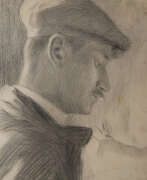

Georg Burmester was a German artist of the late 19th - first third of the 20th centuries. He is known as a painter, graphic artist, impressionist, representative of the Düsseldorf art school, and teacher.
Burmester worked mainly in the genres of landscape and marinas, but among his works there are also still lifes, as well as works in the genre of nude. He was a teacher at the Kassel Art School from 1912 to 1930 and was promoted to the rank of professor in 1917.
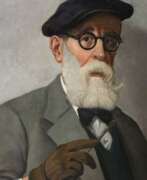

Louis Gustave Cambier is a Belgian painter-painter and sculptor, member of the Royal Academy of Fine Arts in Brussels.
Cambier studied at the Royal Academy of Fine Arts in Brussels and was a co-founder of the Brussels artists' group Le Labeur. During the First World War, he worked as a professor of sculpture at the Académie de Nice and one of his students was Henri Matisse.
Cambier painted landscapes, still lifes and genre scenes, as well as portraits of famous contemporaries, including, for example, a portrait of Winston Churchill.
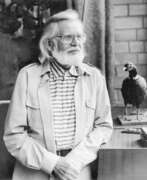

Jonas Čeponis was a Lithuanian painter and representative of the Fauvism movement.
Čeponis graduated from the Lithuanian Art Institute and the Vilnius Institute of Engineering Construction, and was a professor at the Lithuanian Art Institute. Influenced by Fauvism, the artist mainly painted expressive landscapes of Lithuanian villages and Vilnius. His paintings are characterized by decorative, contrasting color combinations. Čeponis also painted portraits, still lifes, figurative compositions and nudes.


Leonid Ivanovich Chernov (Russian: Леонид Иванович Чернов) was a Soviet Ukrainian artist of the second half of the twentieth century. He is known as a painter, graphic artist and teacher.
Leonid Chernov created in various genres, including landscape, still life and genre painting. He has participated in numerous exhibitions since 1945. His work was inspired by business trips to India, Afghanistan, Bulgaria and Cuba. Notable works include cycles of landscapes "Across Ukraine", etchings "In Folk Bulgaria", drawings dedicated to Ukrainian folk songs and poems by Soviet poets.
Chernov nurtured a galaxy of Ukrainian artists and played an important role in the development of the Ukrainian art community.
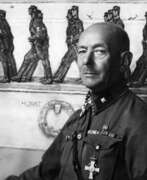

Ludwig Julius Christian Dettmann was a German artist of the late 19th century and the first half of the 20th century. He is known as one of the leading representatives of the Secession in Germany.
Dettmann began his career as an illustrator and in 1895 became a professor at the Berlin Academy of Arts. He then switched to landscape painting, worked in oil and watercolor techniques and became one of the first Impressionists in Germany. In 1898 the artist joined the Association of German Free Artists and co-founded the Berlin Secession. In 1900 Dettmann became director of the Königsberg Academy of Arts and promoted the development of the Nida colony of landscape artists on the Curonian Spit.
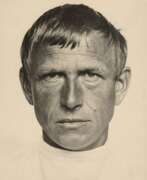

Wilhelm Heinrich Otto Dix was a German artist whose work stands as a stark, unyielding reflection of the societal tumult and trauma of the early 20th century. Born in 1891 in Untermhaus, Germany, Dix's early life was steeped in the arts, his ambition to become an artist nurtured by both familial influence and formal education in Dresden. His experiences as a soldier in World War I deeply influenced his artistic direction, leading him to vividly depict the horrors of war and the decay of the Weimar Republic with a brutal realism that became his signature style.
Dix's association with the Dada movement and the New Objectivity (Neue Sachlichkeit) further honed his critical, often cynical portrayal of post-war society. His works, such as "The Trench" and "War Cripples," expose the visceral aftermath of conflict, while his engagement with the Dadaists imbued his art with a disruptive, confrontational energy against societal norms and the art establishment.
Perhaps most notable is Dix's ability to capture the psychological depth and societal critiques through his portraits and landscapes, which ranged from the grotesque to the surreal. Paintings like "Portrait of the Journalist Sylvia von Harden" and the triptychs "Metropolis" and "War" are emblematic of his keen observation and stark depiction of the era's social and political unrest.
Despite facing significant adversity, including being labeled a degenerate artist by the Nazi regime and facing professional and personal setbacks, Dix's legacy as a painter and printmaker endures. His works are not only historical documents but also profound reflections on humanity, war, and society, resonating with collectors and art experts alike.
For enthusiasts of culture, art, and history, Dix's oeuvre offers an unflinching look into the human condition under the strain of societal and political upheaval. His contributions to painting and printmaking continue to be celebrated in museums and galleries worldwide, underscoring the enduring relevance of his work.
For those interested in exploring the profound depth and historical significance of Otto Dix's work, signing up for updates on new product sales and auction events related to his art can provide invaluable insights. This subscription is a gateway to staying informed about opportunities to engage with the tangible pieces of Dix's enduring legacy.
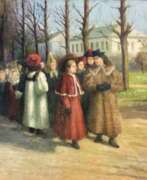

Ivan Osipovich Dudin (Russian: Иван Осипович Дудин) was a Russian and Soviet artist, painter, translator, and educator. He was born on January 19, 1867, in Moscow and passed away on April 4, 1924, in the same city. Dudin received his education at Moscow University and the Moscow School of Painting, Sculpture, and Architecture, where he was awarded the title of class artist in 1902.
Dudin is known for his landscapes, portraits, and genre scenes. His extensive travels influenced his works significantly. Since 1894, he regularly participated in exhibitions of the Moscow Society of Art Lovers and the Association of Traveling Art Exhibitions. Among his notable students were famous artists such as A.V. Kuprin, V.A. Favorsky, and V.I. Mukhina.
One of Dudin's significant works is "Blooming Garden" from 1902, which is exhibited in the State Tretyakov Gallery. His works can also be found in museums in Irkutsk, Kirov, and Krasnodar.
If you want to receive updates on new sales and auction events related to Ivan Osipovich Dudin, sign up for our updates. We will inform you only about new arrivals and events related to this artist.
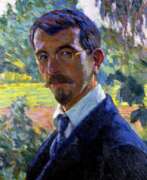

Wilhelm Heinrich Ernst Eitner was a German painter of the late nineteenth and first half of the twentieth centuries. He is known as an impressionist painter and teacher.
Eitner produced portraits, landscapes, and woodcuts in a style reminiscent of Japanese art. Despite initial rejection in German society of his impressionist style of painting, over the years he gained recognition and even the title "Claude Monet of the North." Eitner was a member of numerous art associations. His works are preserved in the Hamburg Kunsthalle.


Taras Huriyovych Gaponenko (Russian: Тарас Гурьевич Гапоненко) was a prominent figure in Soviet art, distinguishing himself as both a passionate painter and a dedicated teacher. Born into a peasant family in 1906 in the Smolensk region, Gaponenko's early life was marked by hardship, including the loss of both parents at a young age. Despite these challenges, he demonstrated an unwavering commitment to his artistic education, which began in earnest when he enrolled at the VKhUTEMAS in Moscow in 1924. Under the tutelage of renowned artists such as Pavel Kuznetsov and Vladimir Favorsky, he honed his craft, eventually graduating in 1930 with the title of artist-painter.
Gaponenko's work vividly captures the spirit of the Soviet era, focusing particularly on themes of collective farm life, the Great Patriotic War, and the beauty of the Soviet landscape. His paintings, characterized by their deep emotional resonance and intricate depiction of Soviet life, earned him widespread acclaim. Notable works such as "At Dinner with Mothers" and "After the expulsion of the fascist invaders" received significant recognition, including a large gold medal at the World Exhibition in Paris and the USSR State Prize, respectively. His contributions to Soviet art are preserved in major collections, including the Tretyakov Gallery and the Russian Museum.
Beyond his achievements in painting, Gaponenko was deeply involved in the artistic community, contributing as a member of prestigious art associations and serving in significant roles within the Union of Artists of the USSR. His journey from a challenging childhood to becoming a People's Artist of the USSR is a testament to his resilience, talent, and the profound impact of his work on Soviet art.
For those passionate about the history of Soviet art and the legacy of its artists, Taras Huriyovych Gaponenko's story is both inspiring and enlightening. His life and work offer a window into the soul of an era, capturing the essence of its people and their struggles with remarkable depth and sensitivity. To stay updated on exhibitions and sales related to Gaponenko's art, sign up for updates and immerse yourself in the rich tapestry of Soviet cultural heritage.


Alexander Fedorovich Gaush (Russian: Александр Фёдорович Гауш), born in 1873 and passing away in 1947, was a distinguished Russian painter whose contributions to art spanned various genres and styles, with a particular emphasis on landscape and still life paintings. His education under the tutelage of prominent artists like P. P. Chistyakov and at the St. Petersburg Academy of Arts, as well as his time at the Académie Julian in Paris, played a significant role in shaping his artistic direction. Gaush's involvement with the "New Society of Artists" and the "World of Art" association highlighted his active engagement with the artistic movements of his time.
Gaush's teaching career in institutions across Petrograd, Sevastopol, and Odessa further underscores his dedication to nurturing the next generation of artists. His works, celebrated for their vivid portrayal of the Russian and Crimean landscapes, are housed in art galleries and museums across Russia, Ukraine, and other countries, testament to his lasting influence and the appreciation of his talent on a global scale.
Collectors and art experts continue to value Gaush's artworks for their historical significance and the unique perspective they offer on the landscapes he depicted. His works, often featured in auctions, reflect not only his skill and versatility but also the rich cultural and artistic heritage of his time.
For enthusiasts keen on exploring Gaush's legacy or adding his works to their collections, staying informed about new sales and auction events is crucial. Signing up for updates related to Alexander Fedorovich Gaush can ensure you don't miss out on the opportunity to own a piece of this illustrious artist's legacy.
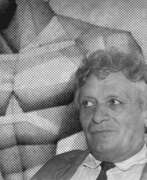

Valery Arutyunovich Geghamyan (Russian: Валерий Арутюнович Гегамян) was a Soviet and Ukrainian artist of the mid-twentieth century of Armenian origin. He is known as a painter, graphic artist and teacher.
Valeriy Geghamyan became famous for his monumental canvases, large thematic cycles and graphic series. He also created portraits, landscapes and still lifes. Since the early 1960s he lived and worked in Odessa and founded the art and graphic arts faculty at the Odessa Pedagogical Institute, where he taught for more than 20 years. The master raised many famous artists, some of whom are also teachers, passing on the experience of their teacher.


Aleksandr Mikhailovich Gerasimov (Russian: Алекса́ндр Миха́йлович Гера́симов) was a Russian and Soviet painter, born on August 12, 1881, in Kozlov (now Michurinsk), in the Tambov Governorate of the Russian Empire. He is best recognized for his leading role in promoting socialist realism in visual arts, notably through his portraits of Joseph Stalin and other Soviet leaders. Gerasimov's education at the Moscow School of Painting, Sculpture, and Architecture honed his skills, guided by masters like K.A. Korovin, A.E. Arkhipov, and V.A. Serov. His style, a blend of academic realism with impressionistic influences, vividly depicted the Russian landscape, leaders, and the daily life of the Soviet era.
His works, rich in emotionality and composition mastery, span across various themes from state portraits to landscapes and still lifes, showcasing a deep love for the Russian landscape's innate beauty. Gerasimov's contributions to art include not only significant political portraits but also captivating scenes of nature and life in Russia, marked by their emotional depth and vibrant colors. His paintings like "Stalin and Voroshilov in the Kremlin" won him the Stalin Prize in 1941, cementing his status in Soviet art history.
Gerasimov's artistry extends beyond his political work; his landscapes and portrayals of Russian expanses convey a deep lyrical sentiment, reflecting his profound connection and love for his homeland. His mastery across various mediums—oil, watercolor, gouache, and more—allowed him to explore and express a wide range of subjects, from portraits and landscapes to still lifes, showcasing his versatility and depth as an artist.
For those interested in the intersection of art and history, Aleksandr Mikhailovich Gerasimov's work offers a fascinating window into Soviet-era Russia, its leaders, and its landscapes. To stay updated on exhibitions and sales of Gerasimov's works, sign up for updates specifically focused on new product sales and auction events related to this distinguished artist.


Vladimir Alexandrovich Gorb (Russian: Влади́мир Алекса́ндрович Го́рб) was a Soviet Russian artist, renowned for his versatile talents in painting, graphic design, and art education. Born on December 31, 1903, in Odessa, Russian Empire, Gorb carved a niche for himself in the Leningrad art scene, contributing extensively to its richness and diversity.
Gorb's education at the Leningrad VKHUTEIN under influential teachers like Alexander Savinov and Kuzma Petrov-Vodkin equipped him with a formidable artistic foundation, which he expanded upon throughout his career. His works, characterized by their vivid portrayal of everyday life and the natural world, were regularly featured in prominent exhibitions from as early as 1925.
Over the years, Gorb became a significant figure in the Soviet art community, not only through his artwork but also through his role as a professor at the Repin Institute of Arts. His commitment to art education shaped many future artists. His works are notable for their depth and complexity, encapsulating the Soviet ethos with a unique blend of realism and personal expression.
For those interested in exploring the works of Vladimir Gorb further or acquiring pieces for their collections, more information is available through dedicated art galleries and historical art resources online. For updates on exhibitions and available works of Vladimir Gorb, you can subscribe to our newsletter, ensuring you're informed about new sales and auction events related to this distinguished artist.
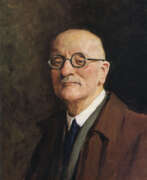

Igor Emmanuilovich Grabar (Russian: И́горь Эммануи́лович Граба́рь) was a distinguished Russian painter, art historian, and museum administrator, whose contributions have left an indelible mark on the world of art. Renowned for his versatility, Grabar was not only a masterful artist but also a visionary in art preservation and education. His work reflects a deep appreciation for Russia's cultural heritage, capturing the essence of its landscapes, historical moments, and architectural beauty with a unique blend of realism and impressionism.
Grabar's significance extends beyond his paintings; he played a pivotal role in the preservation of Russian art, overseeing restoration projects and establishing guidelines that are still in use today. His efforts in cataloging and promoting Russian art helped to elevate the profile of Russian culture on the global stage. Among his well-known works, "February Azure" stands out for its captivating use of color and light, showcasing Grabar's skill in conveying the beauty of Russian winters.
As an educator and museum director, Grabar influenced generations of artists and art historians, embedding a deep respect for artistic heritage and innovation. His leadership at the Tretyakov Gallery and involvement in various art schools helped to shape the direction of Russian art in the 20th century. Grabar's legacy is not just in his artworks but also in his contributions to art education and museum practices, making him a revered figure among collectors, experts, and enthusiasts of art and antiques.
For those passionate about the rich tapestry of Russian art and culture, Igor Emmanuilovich Grabar's work remains a source of inspiration and admiration. We invite collectors and art experts to sign up for updates on new product sales and auction events related to Grabar's work. This subscription is your gateway to the world of a visionary artist whose influence continues to resonate in the art world.
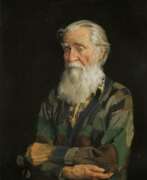

Aleksei Mikhailovich Gritsai (Russian: Алексей Михайлович Грицай) was a Soviet and Russian artist, celebrated for his profound landscape paintings that evoked a deep appreciation for nature's power to inspire humanity. Born on March 7, 1914, in St. Petersburg, Russia, Gritsai's early education in art took place in Leningrad under the guidance of notable figures such as S.M. Zaidenberg, P.S. Naumov, Vasily Yakovlev, and Isaak Brodsky. His unique approach to landscape art, marked by richly colored seasonal rural scenes featuring rolling hills, rivers, and trees, garnered significant acclaim. Beyond his artistic achievements, Gritsai was also recognized as an influential educator, teaching at the Art School in memory of 1905 and the Moscow State Art Institute named after Surikov, where he emphasized the importance of drawing, perspective, and composition in expressing talent.
Throughout his career, Gritsai was honored with prestigious titles and awards, including being named a People's Artist of the USSR in 1974, an academician of the USSR Academy of Arts in 1964, and the recipient of two Stalin Prizes (1951 and 1952) as well as a USSR State Prize in 1978. His dedication not only revived the Russian landscape genre in post-war Soviet art but also made a significant contribution to educating the next generation of artists.
Gritsai's works are part of the collections of major Russian museums, such as the State Tretyakov Gallery in Moscow and the State Russian Museum in St. Petersburg, showcasing his enduring legacy in the canon of Russian art.
For collectors and experts in art and antiques, Gritsai's work remains a testament to the beauty and depth of the Russian landscape, reflecting a deep bond with nature and a nuanced understanding of its essence. His paintings are not only visually stunning but are imbued with the emotional depth and the poignancy of reminiscence, particularly in his later years when he relied on memory due to reduced mobility.
If you're interested in updates related to Aleksei Mikhailovich Gritsai, including new product sales and auction events, sign up for our newsletter. This subscription is specifically tailored for collectors and art enthusiasts eager to stay informed about opportunities to acquire pieces by this remarkable artist.
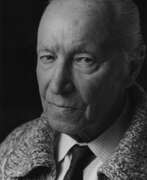

Antanas Gudaitis (Russian: Антанас Мартино Гудайтис), a Lithuanian painter born on July 29, 1904, in Šiauliai, and passing away on April 20, 1989, in Vilnius, was a pivotal figure in Lithuanian art, particularly noted for his contributions to modern expressionist and colorist painting. His studies spanned from the teacher's seminar in Šiauliai to literature at the University of Lithuania, and art at the Kaunas School of Art. Gudaitis further honed his skills in Paris at the National School of Decorative Arts and various private studios until 1933. His career as an educator included positions at the Vilnius Art School, Vilnius Art Academy, and the Vilnius Art Institute, where he was bestowed the title of professor in 1947. Gudaitis's recognition in the Lithuanian art scene was marked by honors such as the title of Meritorious Artist of the LSSR in 1961 and the laureate of the LSSR State Prize in 1965.
His body of work spans portraits, still lifes, and landscapes, showcasing a distinctive style that evolved from decorative and semi-abstract forms to more relief-rich and vibrant color palettes. Gudaitis's art reflects a deep engagement with Lithuanian moods and themes, often weaving intricate metaphors about contemporary life and human relationships. He was instrumental in the establishment of the Lithuanian modernist artist group "Ars" and remained an active member of the Lithuanian Artists' Union from 1935. His impact extended beyond his art, as he nurtured and influenced generations of students, imbuing them with a sense of creativity and resilience.
Antanas Gudaitis is celebrated for bringing avant-garde elements into the Lithuanian art scene and is recognized for his lyrical expressionism. His legacy is underscored by his ability to embody and impart the fundamental tenets of twentieth-century art—freedom, modernity, and national identity—despite the challenging socio-political landscapes of his time. Gudaitis's influence was profound, not just in his artworks, but in his dynamic role as a cultural figure, educator, and free spirit who endured dramatic circumstances without succumbing to them.
For art collectors and experts, Gudaitis's works offer a profound connection to the evolution of Lithuanian modern art, presenting opportunities to explore the rich textures, colors, and symbolic content that define his oeuvre. To stay updated on new product sales and auction events related to Antanas Gudaitis, signing up for updates is highly recommended, promising a gateway to the rich legacy and continued appreciation of his contributions to the art world.


Johann Karl Hetz is a German painter and professor at the School of Applied Arts in Neuburg am Donau.
He studied at the Munich Academy of Fine Arts, and for more than 20 years was professor of drawing and modeling at the Royal School of Applied Arts in Munich.
Hetz painted many genre paintings, architectural sketches and landscapes of Bavaria, Swabia, Tyroli, Italy, Dalmatia, Bosnia and Herzegovina. He has exhibited a large number of watercolors from these southern countries in Bavarian exhibitions and galleries. Hetz is also a recognized master of interior paintings and genre scenes from the lives of ordinary people and the bourgeoisie in 19th century Europe. Many of his genre paintings were published as illustrations in newspapers and magazines. These works are a valuable source of information about the social trends of the time.
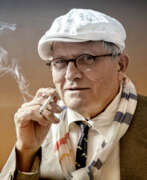

David Hockney, a British artist, has been a prominent figure in the art world for over six decades, renowned for his contributions to painting, drawing, printmaking, photography, and video art. His exploration of these mediums has made significant impacts on the Pop Art movement and beyond, making him one of the most influential artists of the 20th and 21st centuries. Hockney's work is celebrated for its vibrant color palette, emotional depth, and innovative use of technology in art.
One of Hockney's most distinctive features is his ability to blend traditional techniques with modern technology, notably in his iPad drawings and photographic collages. This fusion not only showcases his skillful adaptation to contemporary mediums but also highlights his ongoing quest to explore the nature of seeing and representation in art. Hockney's landscapes and portraits, characterized by their bright colors and meticulous detail, invite viewers to see the world through his unique perspective.
Significant works by Hockney, such as "A Bigger Splash" and "Portrait of an Artist (Pool with Two Figures)," are housed in major museums and galleries worldwide, attesting to his global influence and appeal. These pieces, among others, demonstrate Hockney's mastery over space, light, and narrative, securing his position as a pivotal figure in modern and contemporary art.
For collectors and experts in art and antiques, Hockney's oeuvre presents a fascinating study in the evolution of visual arts. His work not only offers insight into the artist's personal vision but also reflects broader cultural and technological shifts in society. As interest in Hockney's art continues to grow, keeping abreast of new sales and auction events becomes increasingly valuable.
To stay informed about the latest David Hockney sales and auction events, sign up for our updates. This subscription ensures that you receive timely notifications about new product sales and auction events related to David Hockney, offering unique opportunities for collectors and enthusiasts alike.


Hans Hofmann, a German-American painter, stands as a towering figure in the 20th-century art world, celebrated for his vibrant contributions to abstract expressionism. Born in Germany in 1880, Hofmann's journey in art took him across continents, from Europe to the United States, where his innovative teaching methods and bold, color-filled canvases left an indelible mark on generations of artists. His unique approach to painting, characterized by a dynamic interplay of color and form, helped bridge the gap between the European modernist traditions and the emerging American abstract art scene.
Hofmann's work is distinguished by its intense color palettes and the technique he termed "push and pull," which refers to the careful balance of color and shape to create depth and movement within the canvas. This technique not only showcased his mastery over the medium but also influenced the development of abstract expressionism, making Hofmann a pivotal figure among his contemporaries. His paintings, such as "The Gate" (1959-60), exemplify this approach and are celebrated in prestigious museums worldwide, including the Museum of Modern Art in New York and the San Francisco Museum of Modern Art.
Beyond his personal contributions as an artist, Hofmann was an esteemed educator, guiding the next generation of artists through his schools in New York and Provincetown. His teaching philosophy emphasized the importance of understanding the fundamental elements of art—color, form, and space—and their interrelation, which he believed was key to achieving harmony and expression in painting.
For collectors and experts in art and antiques, Hans Hofmann's works represent not just significant artistic achievements but also valuable pieces of cultural history. His paintings and teachings continue to inspire and influence the art world, making his pieces highly sought after in galleries and auctions.
We invite you to sign up for updates on new product sales and auction events related to Hans Hofmann. This subscription is your gateway to owning a piece of art history, ensuring you're informed of the latest opportunities to add to your collection. Join us in celebrating the legacy of a master whose work transcends time and continues to dazzle the art world.


Willi Robert Huth was a German expressionist painter. He studied at the School of Arts and Crafts in Erfurt and Düsseldorf. During the First World War, he served as a soldier. In 1919 he began independent activities in Berlin as an artist. In the same year he joined the expressionist group Jung Erfurt.
With the onset of the Nazi regime, Huth was suppressed as an artist. Later he was even banned from holding exhibitions. Three of his works were confiscated during the "degenerate art movement." In 1944 his studio in Berlin was bombed and all his works were destroyed.
After the war Willy Robert Huth became a drawing teacher and then professor at the Academy of Applied Arts in Berlin.
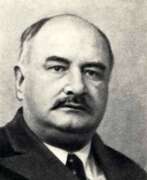

Konstantin Nikolaevich Istomin (Russian: Константин Николаевич Истомин) was a Russian and Soviet artist of the first half of the twentieth century. He is known as an avant-garde painter, teacher, and member of various art societies.
Konstantin Istomin began his career by studying in Munich with the Hungarian painter S. Hollosi, and became acquainted with the art of antiquity and the Renaissance. He then studied art history in Moscow and traveled to Greece and Italy. In his work, the artist combined the traditions of the Peredvizhniki with the European style, standing out with bright plasticity and color. The master was also engaged in theater art, creating scenery and costumes, and wrote theoretical works. He also taught from 1921 until the end of his life.
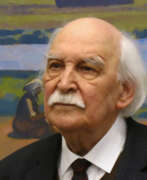

Victor Ivanovich Ivanov (Russian: Виктор Иванович Иванов) was a distinguished Russian painter, recognized for his significant contributions to the "severe style" of painting, a movement that emerged post-World War II. Born on August 2, 1924, in Moscow, Ivanov was an ardent student of art from a young age, training at notable institutions such as the Moscow secondary art school V. I. Surikov and the Moscow Government Art Institute V. I. Surikov.
Ivanov's works often revolve around the themes of rural life and the connection between humans and nature, depicting the life of peasants and their interaction with their environment. His painting "Women Harvesting" is an exemplary work that showcases his style and thematic focus. This piece, which is part of the Tretyakov Gallery's collection, epitomizes Ivanov's ability to blend colors and forms to capture the essence of peasant life, with a particular emphasis on the harmony and solemnity of rural labor.
Throughout his career, Ivanov's art was celebrated not only in the Soviet Union but also internationally, with exhibitions across Russia, Ukraine, and even in Cuba. His artistic philosophy was deeply rooted in realism, through which he believed one could express the spiritual and moral values of the common people. Ivanov's contributions to art were recognized with numerous awards, including the title of People's Artist of the USSR and membership in the Russian Academy of Arts.
For collectors and enthusiasts interested in the profound and evocative works of Victor Ivanovich Ivanov, staying informed about upcoming sales, exhibitions, and auction events is essential. Subscribe for updates exclusively related to Ivanov's works, ensuring you never miss an opportunity to engage with the legacy of this influential artist.
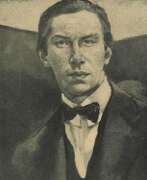

Willi Jaeckel, full name Willi Gustav Erich Jaeckel, was a German painter and graphic artist, a major representative of Expressionism in painting.
Jaeckel studied in Breslau, then at the Dresden Academy of Arts, in 1915 became a member of the Berlin Secession, then a member of the Prussian Academy of Arts. From 1925 he taught at the Higher School of Art Education and at the Berlin University of Art. Jaeckel was one of the first to create works on religious subjects in the Expressionist style, he also painted landscapes, portraits, still lifes and nudes. His works are expressive and decorative in execution. The artist considered his main work to be a series of etchings "Menschgott-Gottmensch".
Willy Jaeckel died in January 1944 during the bombing of Berlin. His works are kept both in German museums and in private collections.


Karl-Otto Jung is a German painter, graphic artist, university lecturer and art historian. He studied painting and graphics at the art academies in Munich, Düsseldorf and London. He first worked as an art teacher in Cologne before accepting an assistantship at the chair for drawing, painting and graphics at the Technical University of Darmstadt. In 1975 he received a professorship at the University of Education in Saarbrücken. A year later, it was incorporated into Saarland University. There, Karl-Otto Jung established a department for visual arts and art education. The works of Karl-Otto Jung can be assigned to modern realism. He is interested in "the depiction of reality drawn from the perception of the visible world, as it manifests itself in portraits, landscapes or still lifes". In addition to oil paintings and watercolors, he creates drawings and etchings. The artist is also an author. He has written several writings on art theory.
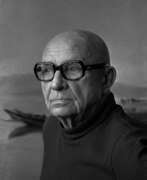

Eduards Kalniņš (Russian: Эдуард Фридрихович Калнынь), born on October 25, 1904, in Riga, Latvia, was a renowned Latvian painter and esteemed educator, notably remembered as the nation's most distinguished marine artist. His early artistic education was shaped under the tutelage of J. Moškevič in Tomsk during his family's refuge period, eventually culminating at the Art Academy of Latvia, where he honed his craft under Vilhelms Purvītis. Kalniņš's tenure at the Art Academy of Latvia as a professor from 1955, after serving as a docent from 1947, significantly influenced the post-war generation of Latvian painters, establishing him as a pivotal figure in Latvian art education.
His artistry was deeply interconnected with exploring the bonds between art and reality, dedicating a considerable part of his work to portraying the lives and environments of fishermen, which later became emblematic of the Latvian painting school. Kalniņš was celebrated for his emotional and profound engagement with reality, high painting culture, and spiritual vitality, often depicted through landscapes and still lifes.
Kalniņš's contributions were internationally acknowledged through exhibitions and awards. He was the first laureate of the prestigious Rome Prize in 1935, which facilitated his studies in Italy, profoundly influencing his artistic palette and style. His works were celebrated in personal exhibitions across Riga, Japan, and various European countries, consolidating his legacy within the global art community.
For art collectors and enthusiasts intrigued by Eduards Kalniņš's profound influence on Latvian maritime painting and his innovative contributions to art education, his works offer a deep dive into the soul of Latvian natural and cultural landscapes. His legacy, marked by vibrant portrayals and educational leadership, continues to inspire and resonate. To stay updated on sales and auction events related to Eduards Kalniņš's art, signing up for updates is highly recommended, ensuring enthusiasts are promptly informed about opportunities to engage with his timeless works.
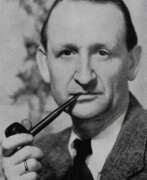

Heinrich Kamps or Heinz Kamps was a German painter and director of the Düsseldorf Academy of Fine Arts.
In 1922, Kamps first presented his work to the public by participating in an exhibition of the artists' association "Das Junge Rheinland". Soon, in 1925, he was already appointed professor at the Düsseldorf Academy of Fine Arts, and four years later he took over the management of the State Art School in Berlin-Schöneberg.
During the Nazi "Degenerate Art" campaign in 1937, Kamps' works were confiscated and lost. In 1941 he was forced to leave for Austria and then Poland; in 1943 his Berlin studio was bombed by the Allies and almost all of his early works destroyed.
After the end of World War II, in 1946 Kamps was elected professor and director of the newly opened Düsseldorf Academy of Art, which he directed until his death.


Alexander Kanoldt was a German painter of the first half of the twentieth century. He is known as a painter, landscape and portrait painter, a representative of the New Materiality movement.
Alexander Kanoldt was one of the founders of the New Munich Art Association and the Blue Rider group. His style evolved from Neo-Impressionism to magic realism, to depicting plants, objects, landscapes and people in angular forms. During the Nazi regime, he tried to adapt to the styles in demand, but many of his works were confiscated as belonging to "degenerate art."
Kanoldt was a professor at the Berlin Academy of Art and director of the State School of Art in Berlin until his retirement in 1936.
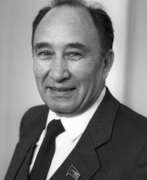

Izzat Klychev (Russian: Иззат Назарович Клычев) was a prominent figure in Turkmen and Soviet art, widely celebrated for his significant contributions to the realm of fine arts. Born on October 10, 1923, in Turkmenistan, Klychev was not only an esteemed painter but also a notable public figure who played a crucial role in nurturing several generations of Turkmen artists. His works, which often focused on the daily lives of people, the beauty of Turkmenistan, and its cultural heritage, received recognition for their vibrant colors and expressive storytelling. Klychev's artistic journey was marked by his innovative use of color and his ability to capture the spirit of his times, blending national and international themes.
Klychev's portfolio includes a broad spectrum of subjects, from landscapes and still lifes to portraits and historical themes, showcasing his versatility as an artist. Notably, his series "My Turkmenistan" earned him the USSR State Prize in 1967, highlighting his profound impact on Soviet and Turkmen art. His style, characterized by a harmonious perception of diverse cultures, was recognized and praised internationally. Klychev's paintings have been exhibited worldwide, in countries ranging from the USA to Japan, and are part of collections in prestigious museums, including the State Tretyakov Gallery and the State Museum of Oriental Art in Moscow.
Beyond his artistic achievements, Klychev's legacy includes his charitable activities and his leadership within the Artists Union of Turkmenistan, where he actively supported young artists and contributed to the formation of an artistic community known as "The Seven". His commitment to art education and his role as a mentor to future generations underscored his dedication to the cultural and artistic development of Turkmenistan.
In summary, Izzat Klychev stands out as a figure who not only enriched Soviet and Turkmen art with his creative vision but also played a pivotal role in shaping the artistic landscape of his country, leaving a lasting legacy that continues to inspire. His life's work reflects a deep connection to his heritage and a broad engagement with the world, making him a key figure in the history of 20th-century art.
For those interested in the history of art and cultural heritage, Klychev's contributions represent an essential chapter in understanding the evolution of Soviet and Turkmen artistic expressions. Collectors and experts in art and antiques are encouraged to explore his works further and sign up for updates related to Izzat Klychev, ensuring they stay informed about new sales and auction events featuring his remarkable creations.
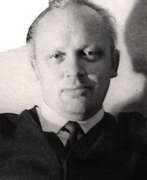

Boris Vasilievich Korneev (Russian: Бори́с Васи́льевич Корне́ев) was a prominent Soviet Russian artist and educator, born on February 15, 1922, in Petrozavodsk, and passed away on December 24, 1973, in Leningrad (now Saint Petersburg). As an Honored Artist of the Russian Federation and a professor at the Leningrad Institute of Painting, Sculpture and Architecture named after Ilya Repin, Korneev made significant contributions to the Leningrad school of painting, specializing in genre painting and portraits.
Korneev's art is notable for its vivid representation of Soviet life and his ability to capture the spirit of his times through thematic and portrait painting. His works often reflected the heroism and the everyday lives of Soviet people, featuring a variety of subjects from workers to landscapes. His painting "Main Street in Biysk" and the portrait of artist M. A. Kozlovskaya are among his notable works. His art is displayed in various museums and is also part of private collections worldwide.
For those interested in exploring the works of Boris Korneev and learning more about his contributions to Soviet art, subscribing to updates on exhibitions and auctions can be enriching. By signing up, you can stay informed about new discoveries of his works and opportunities to view or purchase them at upcoming events. Sign up today to explore the legacy of Boris Korneev and his influence on Soviet art history!
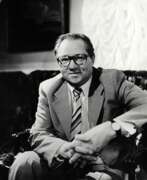

Yuri Konstantinovich Korolyov (Russian: Ю́рий Константи́нович Королёв) was a distinguished Soviet painter, monumental artist, and educator, renowned for his contributions to the art world. Born in 1929 and passing in 1992, Korolyov's career was marked by a profound dedication to the exploration of monumental and decorative compositions, painting, mosaics, and stained glass. His notable achievements include being honored as the People's Artist of the USSR in 1985 and serving as a corresponding member of the Academy of Arts of the USSR since 1983. Korolyov's influence extended beyond his artwork, as he was an esteemed professor at the Higher School of Industrial Art, where he shaped the minds of future artists, and notably held the position of Director at the Tretyakov Gallery from 1980 to 1992.
Korolyov's works are celebrated for their intricate detailing and profound thematic depth, capturing the essence of Soviet ideology through art. His masterpiece, "50 years of the USSR" in Tolyatti, created in 1981, stands as a testament to his skill in creating monumental art that resonates with historical significance and artistic beauty. This piece, among others, showcases Korolyov's mastery in blending artistic innovation with national pride, making his contributions invaluable to the Soviet art scene and beyond.
For art collectors and enthusiasts keen on exploring the works of a visionary who played a pivotal role in Soviet art history, Yuri Konstantinovich Korolyov's legacy offers a rich tapestry of cultural and artistic significance. His dedication to art education and his monumental contributions to the USSR's artistic heritage underscore the profound impact he had on the art world.
To stay updated on exhibitions and sales related to Yuri Konstantinovich Korolyov, signing up for updates is highly recommended. This subscription ensures that collectors and experts are informed about new opportunities to engage with Korolyov's enduring legacy, including upcoming auctions and events.
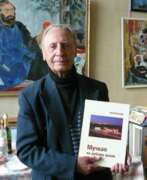

Pyotr Gurievich Korostelyov (Russian: Пётр Гурьевич Коростелёв) was a Soviet and Russian artist of the second half of the twentieth and early twenty-first centuries. He is known as a painter, a representative of the Leningrad school.
Pyotr Korostelyov participated in the Great Patriotic War, after demobilization he graduated from the Leningrad Art and Graphic School and taught art, continuing to be actively engaged in creative work. His works cover a variety of genres, including portraits, genre compositions, still lifes and landscapes. For his contribution to art he was awarded the honorary titles "Honored Artist of the Russian Federation" and "People's Artist of the Russian Federation". The master's works are in various museums and private collections in Russia and abroad.
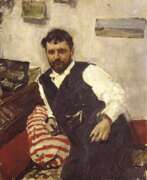

Konstantin Alekseyevich Korovin (Russian: Константи́н Алексе́евич Коро́вин) was a Russian artist and stage designer, renowned for his pivotal role in the transition from Russian Realism to Impressionism. Born in Moscow in 1861, Korovin's artistic journey began at the Moscow School of Painting, Sculpture, and Architecture, where he was heavily influenced by his mentor, Alexei Savrasov. His early work reflected the Realist tradition, but his style evolved after exposure to the vibrant art scenes of Paris and the influence of French Impressionists.
Korovin's contribution to art is marked by his vibrant palette and dynamic brushwork, capturing the transient effects of light and color with a spontaneity that was novel to Russian painting at the time. His works, ranging from lush landscapes and intimate still lifes to vivid portraits, showcase his mastery in evoking mood and atmosphere. Notably, his paintings of the Russian North and scenes of Parisian life have been celebrated for their lively, atmospheric qualities and are held in high esteem in museums and galleries worldwide, including the Tretyakov Gallery in Moscow and the Russian Museum in Saint Petersburg.
Beyond painting, Korovin's legacy includes significant contributions to theater design, where his innovative use of color and lighting brought new dimensions to stage productions in Russia, collaborating closely with the Moscow Art Theatre. His scenic designs for operas and ballets are credited with revolutionizing the visual aspect of Russian theater, making him a pivotal figure in both the visual and performing arts.
For collectors and experts in art and antiques, Korovin's works represent a unique blend of Russian tradition and Western artistic movements, making them highly sought after. His ability to capture the essence of a moment, whether in the tranquil Russian countryside or the bustling streets of Paris, continues to captivate audiences and scholars alike.
To stay informed on new sales and auction events featuring works by Konstantin Alekseyevich Korovin, sign up for our updates. This subscription ensures you're the first to know about valuable opportunities to add to your collection, focusing exclusively on Korovin's art and related events.
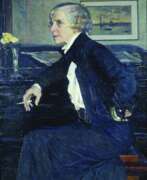

Elizaveta Sergeyevna Kruglikova (Russian: Елизавета Сергеевна Кругликова) was a Russian-Soviet artist, celebrated for her distinctive contributions to etching, silhouette art, and monotyping. Born into a St. Petersburg family with a deep appreciation for art, Kruglikova's talent blossomed early, supported by the artistic atmosphere at home. She honed her skills at the Moscow School of Painting, Sculpture and Architecture before moving to Paris, where she immersed herself in the city's vibrant art scene. From 1902, she experimented with etching, eventually becoming a notable figure in this field.
Kruglikova's Parisian period was marked by her work at the Académie de La Palette, where she both studied and taught, making significant contributions to the art of etching. Her return to Russia at the onset of World War I marked a new phase in her career, as she began exploring the realm of silhouette art, creating evocative portraits and scenes that captured the spirit of her subjects with striking clarity.
Perhaps most renowned for her pioneering work in monotype, a printing technique that allowed her unique expressivity, Kruglikova's art straddles the line between printmaking and painting. Her creations, ranging from the depiction of Parisian life to the vibrancy of the Russian cultural milieu, reflect a deep engagement with both her subjects and her mediums. The artist's ability to revive and innovate within traditional etching and printing techniques garnered her recognition and admiration, culminating in the dedication of the Fourth International Festival of Monotypes to her legacy.
Her works, characterized by a deep exploration of silhouette and monotype techniques, resonate with collectors and art enthusiasts to this day. Notably, Kruglikova was among the first Russian female artists to establish a studio in Paris, contributing significantly to the art scene there and back in Russia. Her late works include insightful portraits of fellow artists and poets, showcasing her mastery of silhouette style and positioning her as a key figure in the transition between printed graphic art and painting.
For collectors and experts in art and antiques, Kruglikova's legacy offers a fascinating glimpse into the innovative spirit of early 20th-century Russian and Soviet art. Her works not only reflect the artistic movements of her time but also stand as testaments to her individual creativity and technical prowess.
Stay informed about new sales, auction events, and exhibitions featuring Elizaveta Sergeyevna Kruglikova by signing up for updates. This subscription is your gateway to the world of a visionary artist whose work continues to inspire and captivate.
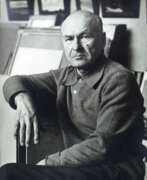

Yuri Petrovich Kugach (Russian: Юрий Петрович Кугач) was a prominent Russian artist, celebrated for his significant contributions to the realm of Soviet and Russian fine arts. His mastery in painting, especially within the genres of landscape and thematic works, marked him as a leading figure in the Russian realistic school of painting. Born in 1917, Kugach's artistic journey was distinguished by his dedication to portraying the natural and social landscapes of his homeland, earning him numerous prestigious titles and awards, including the People’s Artist of the USSR and the State Prize of the RSFSR named after I.E. Repin.
Kugach's works are known for their depth, expressiveness, and fidelity to the traditions of Russian realism. His celebrated pieces such as “On Saturday” and “Before the Dances” not only won him the State Prize of the RSFSR but also solidified his position as a steward of Russian artistic heritage. His art, deeply interwoven with the cultural and historical fabric of Russia, continues to attract attention and admiration, reflecting his lifelong commitment to exploring and depicting the essence of Russian life and nature.
As a key figure in Soviet and post-Soviet art, Yuri Kugach's legacy extends beyond his individual creations to include a dynasty of artists he inspired within his own family, fostering a lineage deeply rooted in the realistic portrayal of Russian subjects. His contributions to Russian art are celebrated through exhibitions and in collections both nationally and internationally, underlining the enduring appeal and significance of his work.
For collectors and experts in art and antiques, Kugach's oeuvre offers a rich tapestry of Soviet and Russian life through the lens of realism. His ability to capture the spirit of his subjects with authenticity and emotional depth makes his works highly sought after in the art world. To stay updated on new product sales and auction events related to Yuri Petrovich Kugach, sign up for updates and immerse yourself in the legacy of one of Russia's most revered artists.
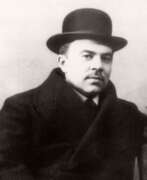

Pavel Kuznetsov (Russian: Павел Варфоломеевич Кузнецов) was a Russian artist, celebrated for his pioneering role in the Symbolist movement and his profound influence on the development of Russian modernist art. Born into the late 19th century, Kuznetsov's work spans painting, sculpture, and illustration, showcasing a unique blend of Eastern and Western artistic traditions.
Kuznetsov's art is renowned for its vibrant use of color, ethereal landscapes, and mystical themes. His distinctive style combines traditional Russian iconography with the innovative techniques of European modernism, making his work highly prized among collectors and art enthusiasts. Kuznetsov was a key member of the Blue Rose artist group, which sought to express the spiritual and emotional through art. This collective's contributions are considered seminal in the evolution of Russian Symbolism.
Among Kuznetsov's notable works are his dreamlike paintings of Central Asia, which brought a new dimension to Russian art by introducing themes and aesthetics from Eastern cultures. These pieces are not only significant for their artistic merit but also for how they reflect the cross-cultural exchanges of the early 20th century. Some of his masterpieces are held in prestigious institutions, including the Tretyakov Gallery and the Russian Museum, making them accessible to the public and subject to scholarly study.
For collectors and experts in the fields of art and antiques, Kuznetsov's works represent a valuable intersection of cultural heritage and artistic innovation. His contributions to the Symbolist movement and Russian modernism continue to inspire and influence contemporary art discourse.
To stay informed about new product sales and auction events related to Pavel Kuznetsov, sign up for our updates. This subscription is an excellent resource for collectors looking to enhance their collections with pieces by this distinguished artist. Join our community today and ensure you never miss an opportunity to acquire works by Pavel Kuznetsov.
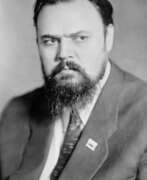

Aleksandr Ivanovich Laktionov (Russian: Александр Иванович Лактионов) was a distinguished Russian artist, celebrated for his intricate approach to painting and his ability to capture the essence of Soviet life through his art. Born in 1910, Laktionov's work spans a crucial period in Russian history, reflecting the cultural and social transformations of his time. He is renowned for his hyperrealistic paintings, which stand as a vivid chronicle of the era's ethos and its people's spirit.
Laktionov's artistry is marked by his meticulous attention to detail, a characteristic that has endeared him to art collectors and experts alike. His paintings are not just visual masterpieces; they are historical documents that offer a window into the daily lives of Soviet citizens, making him a vital figure in the study of Russian culture and art history. Among his most celebrated works is "A Letter from the Front," housed in the Tretyakov Gallery, Moscow. This painting is emblematic of Laktionov's ability to merge technical precision with deep emotional resonance, capturing the poignant realities of wartime Russia.
For collectors and experts in art and antiques, Laktionov's oeuvre represents an invaluable insight into the Soviet aesthetic and its underlying ideologies. His works are a testament to the enduring power of art to reflect and shape the narrative of its time. As interest in 20th-century Russian art continues to grow, Laktionov's paintings remain highly sought after, not only for their artistic merit but also for their historical significance.
We invite collectors and enthusiasts to sign up for updates related to Alexander Ivanovich Laktionov. Subscribing will keep you informed about new product sales and auction events featuring Laktionov's work. Rest assured, this subscription is focused solely on providing you with the latest opportunities to enhance your collection with pieces from one of Russia's most revered artists.
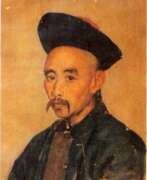

Anton Mikhailovich Legashov (Russian: Антон Михайлович Легашов) was a Russian artist of the first half of the 19th century. He is known as a painter, graphic artist and teacher.
Anton Legashov painted landscapes, portraits, genre paintings and still lifes. Many of them - using Chinese motifs and subjects. The painter lived more than 10 years in Beijing, where he was very popular with the local population for his work. He also created a series of religious paintings and icons for the Russian Spiritual Mission in Beijing.


Dietmar Lemcke was a German painter, graphic artist and professor at Berlin University of the Arts and member of the Deutscher Künstlerbund.
Dietmar Lemcke studied with Karl Schmidt-Rotluff and Karl Hofer at the Berlin Academy of Fine Arts from 1948 to 1954. Immediately after completing his studies he received a one-year scholarship to the Académie de Montmartre in Paris, whose director at the time was Fernand Léger.
The master mainly worked in genres such as landscape and still life. He never sought to dissolve representation, but preferred colour to form. Expressionism had a great influence on Dietmar Lemke's work.
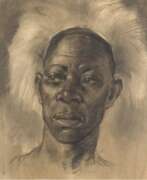

Henri Logelain was a Belgian Neo-Impressionist watercolorist.
Logelain studied at the Academy of Fine Arts in Brussels and in Rome, at the Belgian Academy, and was a member of the free workshop L'Effort. He worked with watercolors and painted still lifes, a variety of landscapes and portraits. From his trip to the Belgian Congo in 1938, Logelain brought back many portraits of native Congolese.


Hans Looschen was a German painter and illustrator.
Looschen received his professional education at the Prussian Academy of Fine Arts, 1893 regularly participated in the Great Berlin Art Exhibition and was its president on several occasions. From 1899 to 1901 he was represented in the Berlin Secession and was also a member of the Berlin Artists' Association.
Hans Looschen painted landscapes and portraits, still lifes and historical paintings in the style of 19th century realism. He also worked as an illustrator. During his lifetime, Loschen received many awards and prizes for his work.
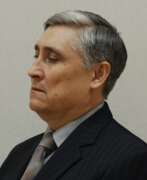
Victor Mikhailovich Malyi (Russian: Виктор Михайлович Малый) is a Soviet and contemporary Russian artist. He is known as a painter and teacher, Honored Art Worker of Russia.
Victor Malyi as a painter specializes in the genres of landscape and still life. His artistic career began with a major exhibition "Soviet South" in 1967. For his contribution to art, he was awarded many certificates, diplomas and badges of honor from various organizations and departments.
His works are in museums, private collections and galleries both in Russia and abroad. Since 1976, he has also taught painting at the Surikov Moscow State Academic Art Institute and is a professor at this institution.


Vitold Antonovich Manastyrsky (Russian: Витольд Антонович Манастырский) was a Ukrainian and Soviet artist of the second half of the twentieth century. He is known as a painter, graphic artist, teacher, and son of the artist Anton Manastyrsky.
Vitold Manastyrsky created many works, including genre paintings, portraits, landscapes and still lifes. In his works he reflected the beauty of the Pre-Carpathian region, the life of its inhabitants, as well as portrayed his contemporaries - workers, peasants and cultural figures. He was active both creatively and in public and pedagogical spheres, he was often elected to the governing bodies of the Union of Artists of Ukraine. Many of his works are exhibited in Ukrainian museums and galleries.
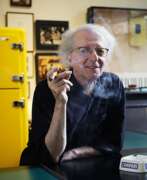

Tom Marioni is an American artist and educator, known for his conceptual artwork. Marioni was active in the emergence of Conceptual Art movement in the 1960s. He founded the Museum of Conceptual Art (MOCA) in San Francisco from 1970 until 1984. Marioni received his art training at the Art Academy of Cincinnati between 1955 and 1959. From 1975 – 1982, he was editor of Vision, an art journal published by Crown Point Press. From 1986 until 1971, he served as the curator at the Richmond Art Center in Richmond, California. He used the pseudonym and alter-ego Alan Fish in some early performances. Famous works by Marioni include: "One Second Sculpture" (1969), "The Act of Drinking Beer with Friends is the Highest Form of Art" (1970). Marioni's work is included in many public museum collections including San Francisco Museum of Modern Art (SFMoMA), Fine Arts Museums of San Francisco (FAMSF), among others.
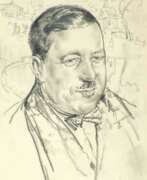

Ilya Ivanovich Mashkov (Russian: Илья Иванович Машков) was a Russian artist, renowned for his vivid and sensory-rich paintings, embodying the essence of Russian Neo-Primitivism. His journey began in the village of Mikhailovskaya, propelling from a humble background to becoming one of the most significant figures in the "Jack of Diamonds" group. His works are celebrated for their tangible, almost tactile quality, drawing viewers into a vivid world where colors pop and forms pulse with life.
Mashkov's notable participation in significant exhibitions across Europe and the United States, including the Salon d'Automne and the Venice Biennale, helped cement his status in the art world. One of his masterpieces, "Still Life with Fruit," fetched a record $7.3 million at a Christie's auction in 2013, underlining his critical and commercial acclaim. This painting, a prime example of Russian Neo-Primitivism, was unveiled at the inaugural Jack of Diamonds exhibition, highlighting Mashkov's pioneering role in Russian Avant-Garde.
Mashkov's contributions extended beyond his canvas; he was a dedicated educator, establishing his art school and later teaching at VKhUTEMAS. His influence is palpable in the collections of major museums, including the Russian Museum, which houses a diverse array of his works from vibrant still lifes to expressive portraits.
For collectors and experts in art and antiques, Mashkov's legacy offers a captivating glimpse into the evolution of Russian modernism. His works, characterized by their bold coloration and dynamic composition, continue to inspire and attract admiration worldwide.
To stay updated on sales and auction events featuring Ilya Ivanovich Mashkov's work, signing up for updates is highly recommended. This ensures you're always informed about the latest opportunities to acquire pieces by this master of Russian Neo-Primitivism.


Adolf Izrailevich Milman (Russian: Адольф Израилевич Мильман) was a Russian and French painter, born in 1886 in Kishinev, then part of the Russian Empire, into a large Jewish family. He initially studied at a commercial school in Kishinev before moving with his family to Moscow in the early 1900s, where he entered the Moscow School of Painting, Sculpture, and Architecture. Milman's early career was marked by his attendance at the art studio of Ilya Mashkov, a significant influence and a close friend. He was deeply involved in the Russian avant-garde art scene, becoming a member of the Jack of Diamonds group in 1911 and later joining the World of Art association along with notable artists like Robert Falk and Alexander Lentulov.
Milman's work was characterized by his engagement with the Jack of Diamonds group, where he exhibited his pieces in their group exhibitions between 1912 and 1914. His artworks from this period include vibrant landscapes and still lifes, reflecting the avant-garde movements of the time. By 1917, he had joined the World of Art association, contributing to its exhibitions and emphasizing his evolving artistic style. Beyond his creation, Milman also dedicated time to teaching at Ilya Mashkov's private studio of painting and drawing until his health was compromised by tuberculosis, leading him to seek treatment in Crimea annually from 1914.
Milman's later years saw him move to France, where he continued to participate in the Russian art exhibitions in Paris and the Hague, further cementing his role in the broader European art scene until his death in 1930.
For collectors and experts in art and antiques, Milman's work represents a bridge between Russian and French avant-garde art movements, embodying the vibrant cultural exchanges of the early 20th century. His pieces, often displayed in museums and galleries, offer a glimpse into the dynamic art scene of his time.
To stay updated on works and auction events related to Adolf Izrailevich Milman, consider signing up for updates. This subscription will alert you to new product sales and auction events, ensuring you don't miss an opportunity to appreciate or acquire pieces by this influential artist.
